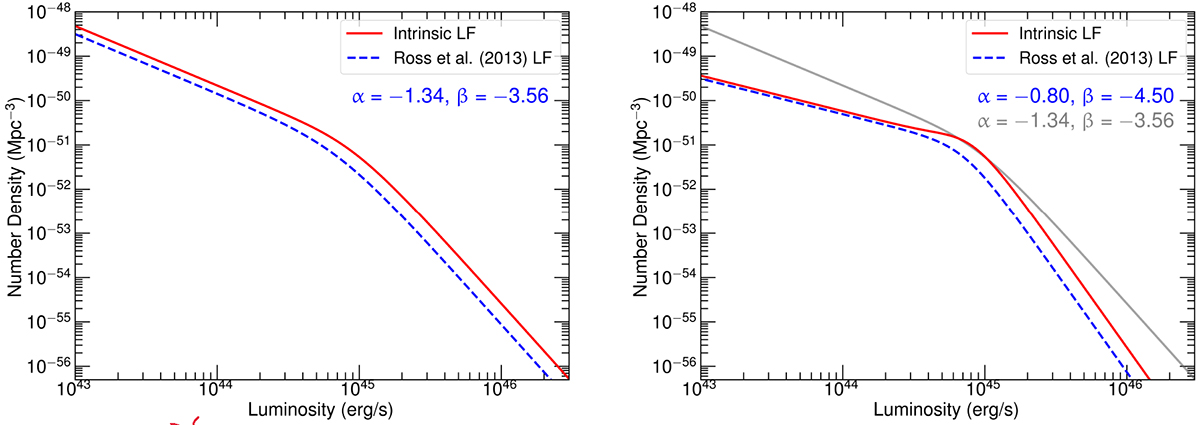Fig. 3.

Download original image
Effect of inclination on the luminosity function shape, and how this effect depends on the slope values of the luminosity function. Left: observed luminosity function n(L), in blue dashed, as per the Ross et al. (2013) parametrisation: the luminosity function is a broken power law with indexes α = −1.34 and β = −3.56, and log(ϕ*) = − 6.15. A Pure Luminosity Evolution is assumed. In this figure we show, as an example, the results for z = 1. In solid red, the intrinsic luminosity function m(ℒ), which is corrected for inclination effects. Right: same as the left panel, but with an observed luminosity function assumed to have indexes α = −0.8 and β = −4.5. The comparison between the two panels shows that a greater difference between α and β accentuates the knee distortion and the variance between m(ℒ) and n(L) at higher luminosities. For a better comparison, the red solid line of the left panel is also plotted in the right panel, in grey.
Current usage metrics show cumulative count of Article Views (full-text article views including HTML views, PDF and ePub downloads, according to the available data) and Abstracts Views on Vision4Press platform.
Data correspond to usage on the plateform after 2015. The current usage metrics is available 48-96 hours after online publication and is updated daily on week days.
Initial download of the metrics may take a while.


